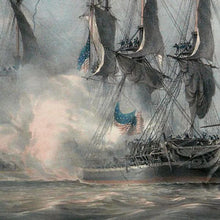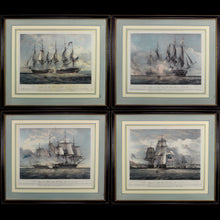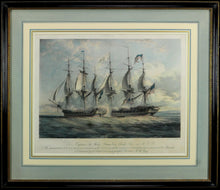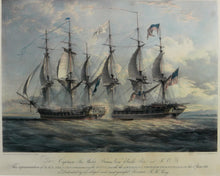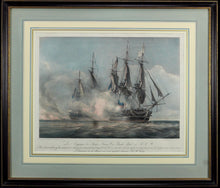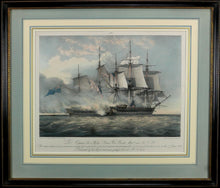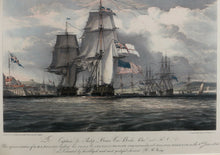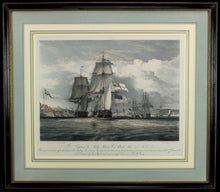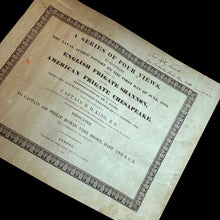Set of Four Engravings - HMS Shannon vs. USS Chesapeake, 1813
Adding product to your cart
Overall: 57.5cm (22.5in) x 66cm (26in)
Provenance:
Gifted to Fitzroy Somerset, 1st Baron Raglan (1788-1852) by fellow Waterloo veteran Major-General Sir Charles Broke Vere, KCB, 2nd Baronet, younger brother of the Captain of HMS Shannon, Sir Philip Very Broke, 1st Baronet.
Set of four lithographs produced in 1830 as a collaboration between Captain R.H. King, R.N., the maritime painter J.C. Schetky and the engraver Louis Haghe. Published by Smith Elder & Co. Label of the long established naval and military print dealer The Parker Gallery (est. 1750), of Albermarle Street, London verso. Contained in period ebonised and gilt frames. Accompanied by the original cover for the notes bearing an autograph inscription by the son of Captain Sir Philip Vere Broke - ‘Lord Fitzroy Somerset from Sir Charles Broke Vere KCB June 28 1830’.
Each engraving numbered in the top margin, and dedicated ‘To Captain Sir Philip Bowes Vere Broke, Bart. and K.C.B.’ lettered with titles, and maker’s details in the lower margin.
When the United States first declared war on the Britain during the summer of 1812, the Royal Navy was confident in the face of an untested US Navy. It was an assumption that was quickly proven to be wrong. The newer, faster American ships were heavily armed and their crews well trained. By the end of the first year the Royal Navy had suffered a string of humiliating defeats, including the losses of HMS Guerriere (38 guns) and HMS Java (38) to the USS Constitution, and the capture of HMS Macedonian (38) by the USS United States. As the second year of the war began, the Royal Navy’s need for a victory was desperate.
HMS Shannon, commanded by Captain Philip Broke, was under orders to intercept shipping off Boston harbour. In desperation Broke sent a message to Captain James Lawrence of the USS Cheasapeake goading him to battle, but Lawrence had already set sail before receiving the note. Although the two vessels were evenly matched, the Americans anticipated another easy victory and the Bostonians on shore prepared for a victory celebration before the battle had even begun.
Around noon on 1 June 1813, USS Chesapeake and HMS Shannon closed and opened fire. Shannon inflicted significant damage on Chesapeake before the two ships became locked together. As guns blazed and boarding parties attacked, Lawrence was mortally wounded and famously shouted “Don’t give up the ship”, but his words were in vain. In less than fifteen minutes, Chesapeake had been defeated in what would become one of history’s most celebrated single-frigate battles. A prize crew was put aboard Chesapeake by Shannon’s the Canadian-born acting commanding officer Lieutenant Provo Wallis, and escorted to Halifax, arriving there on 6 June. The news of the British victory spread rapidly, inspiring in time paintings, prints, poems, and songs performed on the London stage, not to mention a re-enactment on the Serpentine in Hyde Park.
Of all the depictions of the action, those of Jan Christian Schetky (1778-1874) are deemed to be both the most accurate and aesthetically pleasing. Schetky was Drawing Master at the Royal Naval College at Portsmouth and painter in watercolours to the Duke of Clarence, later William IV, the Sailor King. On Captain Broke’s return to England Schetky was granted a detailed account of the battle at Broke's lodgings in Southsea. Another reason for their accuracy was due to the input Captain R.H. King RN, who was Shannon’s first lieutenant but missed the action by being away in another ship. He subsequently took great care in recording its details from the surviving participants. A set of the prints was sent to William IV on publication in 1830 and were warmly received in to the Royal Collection. While interest in other events of the largely unpopular War of 1812 waned, the fight between Shannon and Chesapeake became a cultural icon of naval history.












